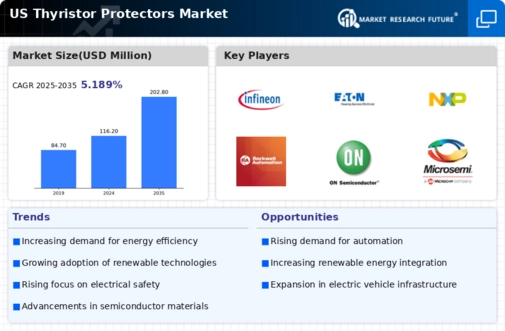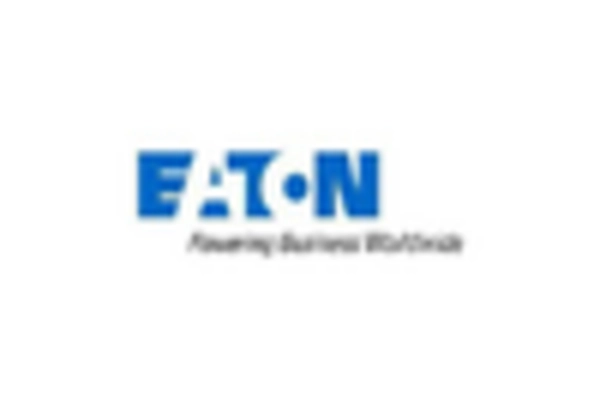Increased Focus on Grid Modernization
The modernization of the electrical grid in the US is a significant driver for the thyristor protectors market. As utilities invest in upgrading aging infrastructure, the need for advanced protection devices becomes critical. Thyristor protectors help mitigate risks associated with grid fluctuations and disturbances, ensuring a stable power supply. The US Department of Energy has allocated substantial funding for grid modernization projects, which is likely to enhance the adoption of thyristor protectors. With the grid expected to incorporate more distributed energy resources, the demand for reliable protection solutions is projected to rise. The thyristor protectors market could see a growth trajectory of approximately 5% as utilities prioritize safety and reliability.
Regulatory Compliance and Safety Standards
The increasing regulatory requirements and safety standards in the US are influencing the thyristor protectors market. As industries face stricter compliance mandates, the need for effective protection devices becomes more pronounced. Thyristor protectors are essential in meeting these standards, particularly in sectors such as manufacturing and energy. The Occupational Safety and Health Administration (OSHA) and the National Fire Protection Association (NFPA) have established guidelines that necessitate the use of protective devices to prevent electrical hazards. This regulatory landscape is likely to drive the demand for thyristor protectors, as companies seek to ensure compliance and enhance workplace safety. The market is expected to grow by around 4% as organizations invest in protective technologies.
Rising Adoption of Renewable Energy Sources
The transition towards renewable energy sources in the US is driving the thyristor protectors market. As solar and wind energy installations increase, the need for reliable protection devices becomes paramount. Thyristor protectors are essential in safeguarding electrical systems from overvoltage and surges, which are common in renewable energy applications. The US government has set ambitious targets for renewable energy, aiming for 50% of electricity generation from renewables by 2030. This shift is likely to enhance the demand for thyristor protectors, as they play a critical role in ensuring the stability and reliability of these energy systems. The market for thyristor protectors is projected to grow at a CAGR of 6% through 2027, reflecting the increasing integration of renewable technologies.
Expansion of Electric Vehicle Infrastructure
The burgeoning electric vehicle (EV) market in the US is significantly impacting the thyristor protectors market. As the number of EV charging stations proliferates, the demand for robust electrical protection systems escalates. Thyristor protectors are crucial in managing the high power loads associated with fast charging stations, preventing damage from electrical surges. The US government has committed to installing 500,000 charging stations by 2030, which could potentially increase the market for thyristor protectors. This expansion not only supports the EV market but also necessitates advanced protection solutions to ensure the safety and efficiency of charging infrastructure. The thyristor protectors market is expected to benefit from this trend, with an anticipated growth rate of 7% annually.
Technological Innovations in Power Electronics
Technological innovations in power electronics are reshaping the thyristor protectors market. Advances in semiconductor technology and materials are leading to the development of more efficient and reliable thyristor protectors. These innovations enable better performance in high-voltage applications, which is crucial for industries such as telecommunications and energy. The US market is witnessing a surge in demand for high-performance protection devices that can withstand extreme conditions. As manufacturers continue to innovate, the thyristor protectors market is likely to experience a growth rate of 6% over the next few years. This trend indicates a shift towards more sophisticated protection solutions that can cater to the evolving needs of various sectors.
















Leave a Comment